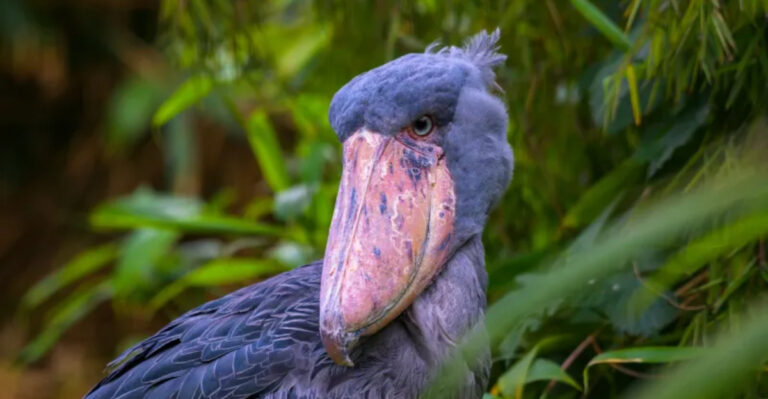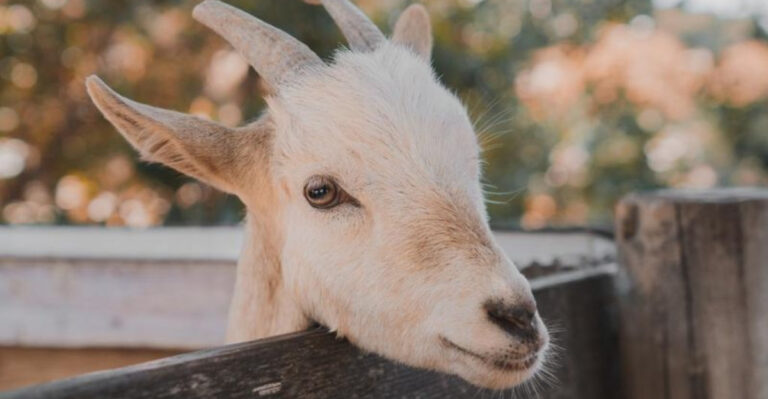13 States Where You’re Most Likely To See A Mule Deer

Mule deer, with their distinctive large ears and forked antlers, roam across much of western North America. These magnificent creatures thrive in diverse habitats from mountains to deserts, making them a thrilling sight for wildlife enthusiasts.
If you’re hoping to spot these beautiful animals in their natural habitat, certain states offer better chances than others due to healthy populations and accessible viewing areas.
1. Colorado’s Rocky Mountain Paradise
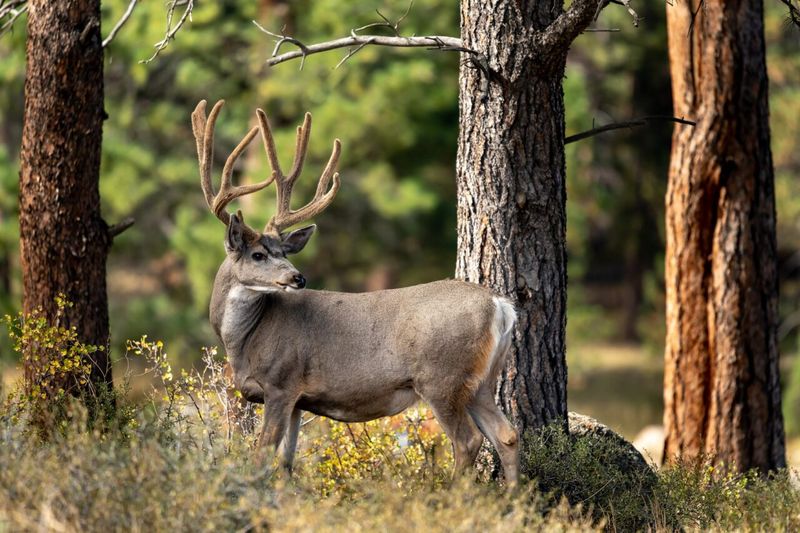
The Rocky Mountain state boasts one of the largest mule deer populations in America. These majestic creatures roam freely throughout Colorado’s diverse landscapes, from alpine meadows to sagebrush flats.
Fall brings spectacular viewing opportunities when mule deer migrate to lower elevations. Rocky Mountain National Park and the western slope regions offer particularly good chances to observe these animals grazing peacefully or bucks sparring during rutting season.
2. Wyoming’s Wide Open Spaces
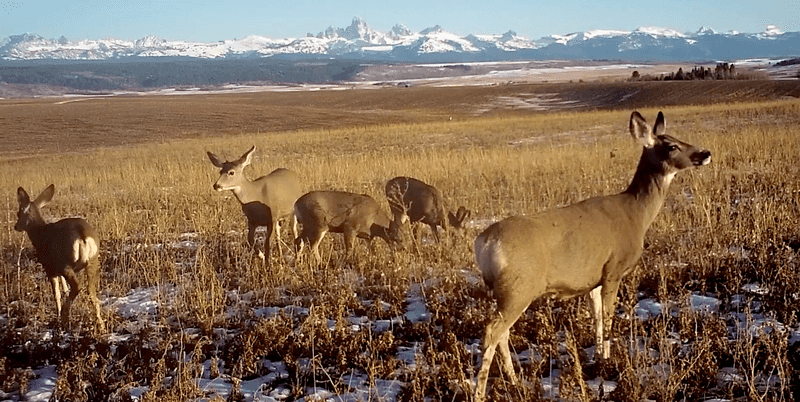
Wyoming serves as home to roughly 400,000 mule deer across its vast, untamed terrain. The state’s combination of mountains, foothills, and prairies creates ideal habitat conditions for these adaptable animals.
Grand Teton National Park offers spectacular viewing opportunities, especially at dawn and dusk. Local conservation efforts have helped maintain healthy populations despite challenges from development and harsh winters that occasionally impact herd numbers.
3. Utah’s Desert Dwellers
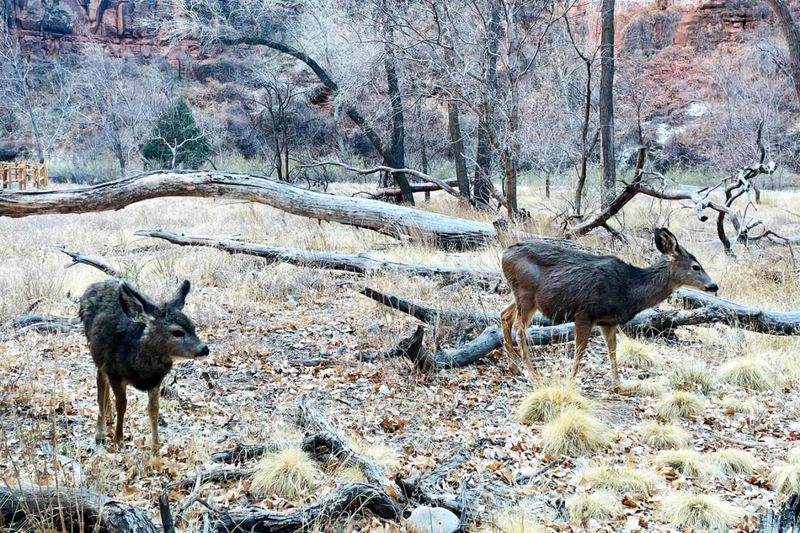
Utah’s varied landscape supports thriving mule deer populations, particularly in the southern regions. Morning hikes through Zion or Bryce Canyon National Parks frequently reward visitors with sightings of these graceful animals.
Winter brings many deer down from higher elevations, making roadside spotting common along scenic byways. Conservation areas like the Paunsaugunt Plateau have become famous for producing trophy-sized bucks that attract wildlife photographers and ethical hunters alike.
4. Montana’s Mountain Monarchs
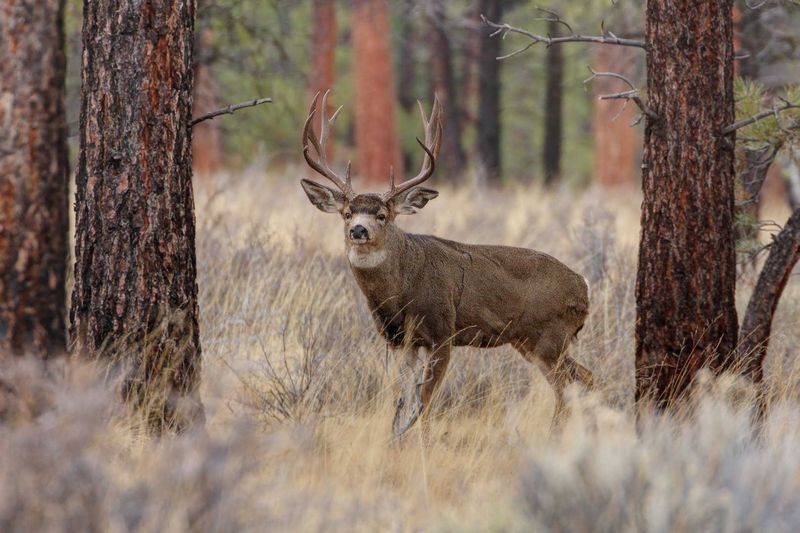
Montana’s vast wilderness provides sanctuary for robust mule deer populations. The eastern plains and western mountains both harbor healthy herds that move seasonally between summer and winter ranges.
Wildlife management areas like the Charles M. Russell National Wildlife Refuge offer excellent viewing opportunities. During fall, mule deer become more visible as they gather for breeding season, with dominant bucks collecting harems of does in spectacular displays of natural behavior.
5. Idaho’s Hidden Valleys
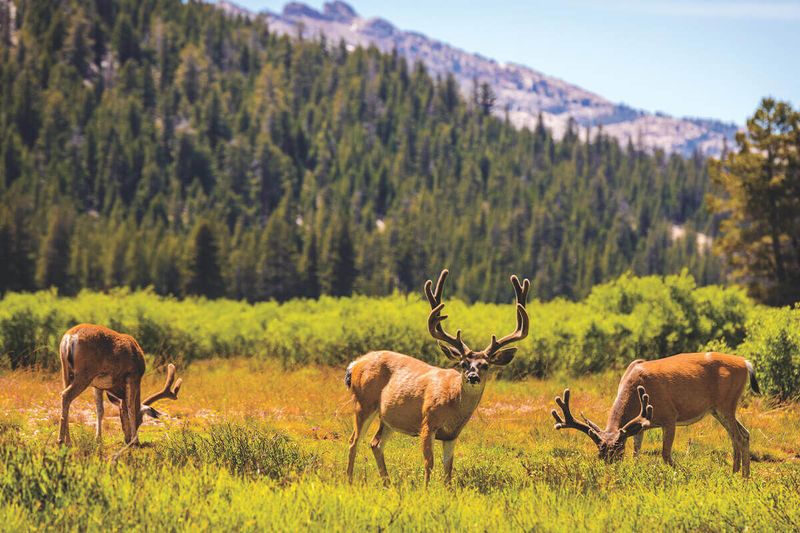
Idaho’s diverse terrain creates perfect mule deer habitat across the state. From the sagebrush plains of the south to the mountainous north, these animals thrive in Idaho’s varied ecosystems.
The Clearwater Region offers particularly good viewing opportunities, especially during migration seasons. Conservation efforts have helped maintain stable populations despite challenges from predators and changing landscapes. Early mornings near water sources provide your best chance for spotting these cautious creatures.
6. Nevada’s Desert Survivors
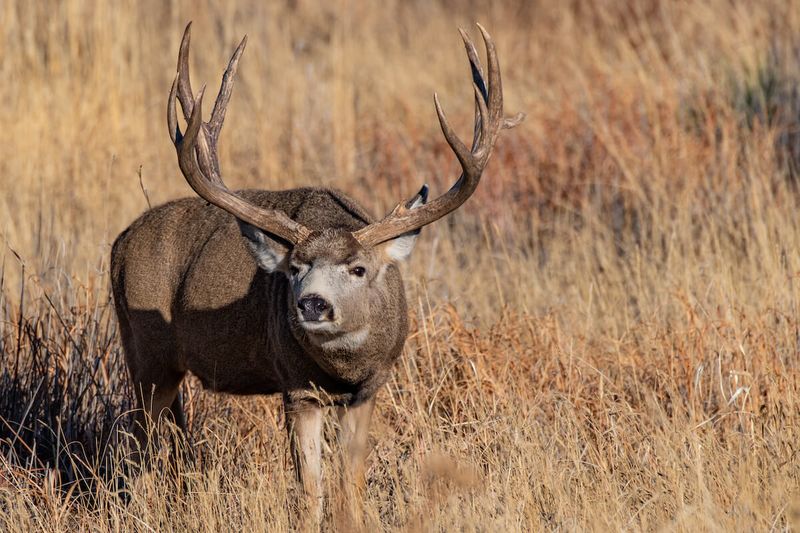
Nevada’s arid landscapes might seem inhospitable, but mule deer have adapted brilliantly to these harsh conditions. These resilient animals find sustenance in desert vegetation that other species overlook.
Great Basin National Park offers reliable viewing opportunities, especially near water sources during early morning or evening hours. Conservation efforts focus on protecting critical migration corridors that allow deer to move between seasonal ranges despite increasing development and fragmentation of their traditional territories.
7. Oregon’s Coastal Range Residents
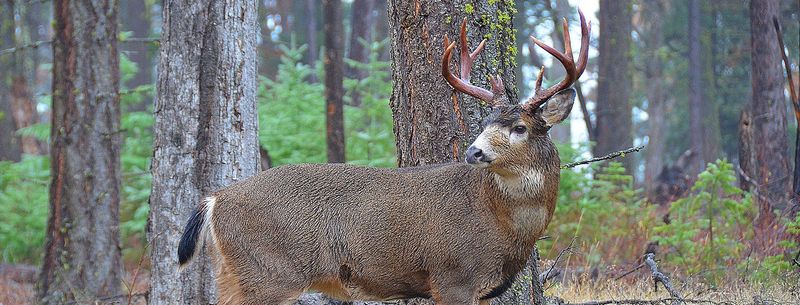
Oregon’s diverse ecosystems support healthy mule deer populations, particularly in the eastern and central regions. The high desert areas around Bend and the John Day River valley host substantial numbers year-round.
Hart Mountain National Antelope Refuge, despite its name, offers excellent mule deer viewing opportunities. Blacktail deer, a subspecies of mule deer, inhabit the coastal ranges, providing unique viewing opportunities for wildlife enthusiasts exploring Oregon’s western forests.
8. Arizona’s Desert Adaptations
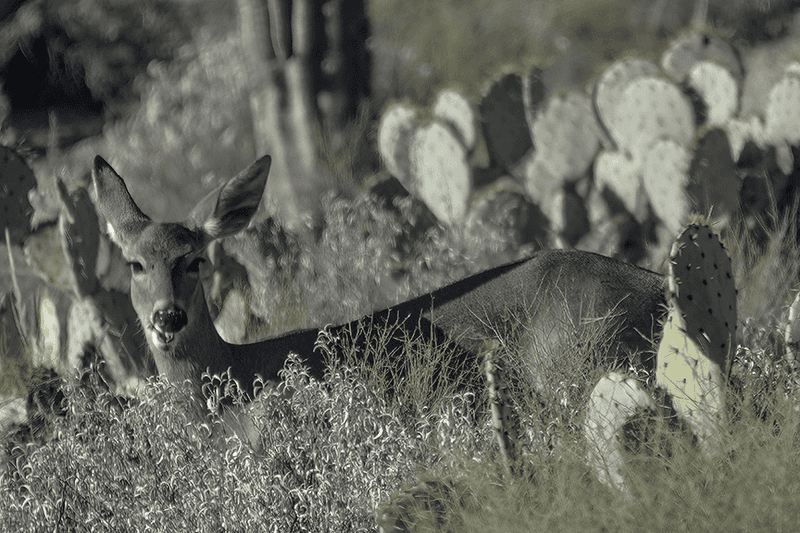
Arizona’s desert mule deer showcase remarkable adaptations to extreme heat and limited water. These animals have evolved to extract moisture from desert plants and can go longer without drinking than their northern relatives.
The Kaibab Plateau north of the Grand Canyon supports a famous herd known for impressive antler growth. Wildlife viewing areas near Flagstaff and the Mogollon Rim provide reliable opportunities to spot these animals, especially during the cooler hours around dawn and dusk.
9. New Mexico’s High Country Herds
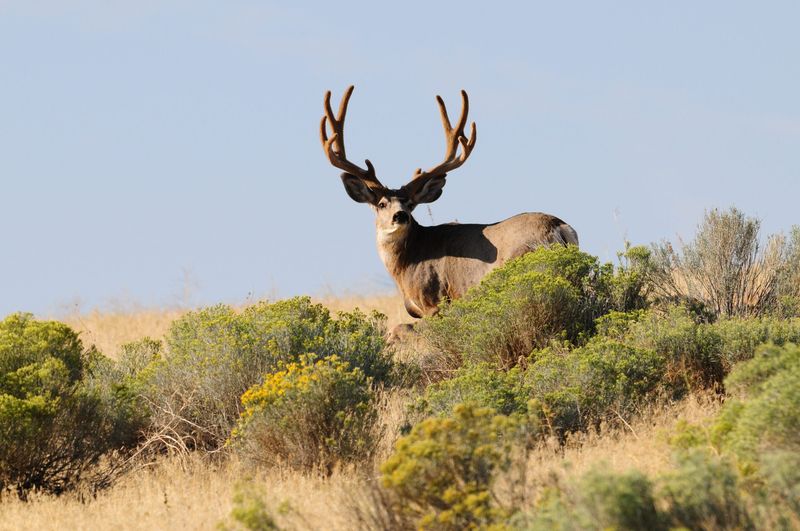
New Mexico offers excellent mule deer habitat across its northern mountains and eastern plains. The contrast between alpine forests and desert landscapes creates diverse ecosystems where these adaptable animals thrive.
The Gila National Forest provides prime viewing opportunities, especially during fall when deer become more active. Local conservation efforts focus on habitat preservation and sustainable management practices to ensure healthy populations for future generations to enjoy.
10. Washington’s Eastern Plateau
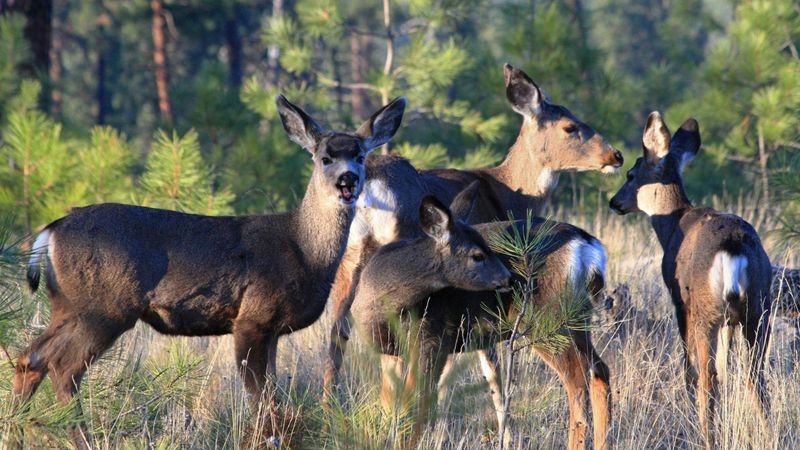
Washington state harbors healthy mule deer populations, primarily east of the Cascade Mountains. The semi-arid Columbia Basin and surrounding foothills provide ideal habitat with their mix of open grasslands and protective cover.
The Methow Valley offers reliable viewing opportunities throughout the year. Winter brings many deer down to lower elevations, making them more visible along roadways and near communities. Conservation efforts focus on protecting migration corridors essential for seasonal movements.
11. California’s Sierra Nevada Range
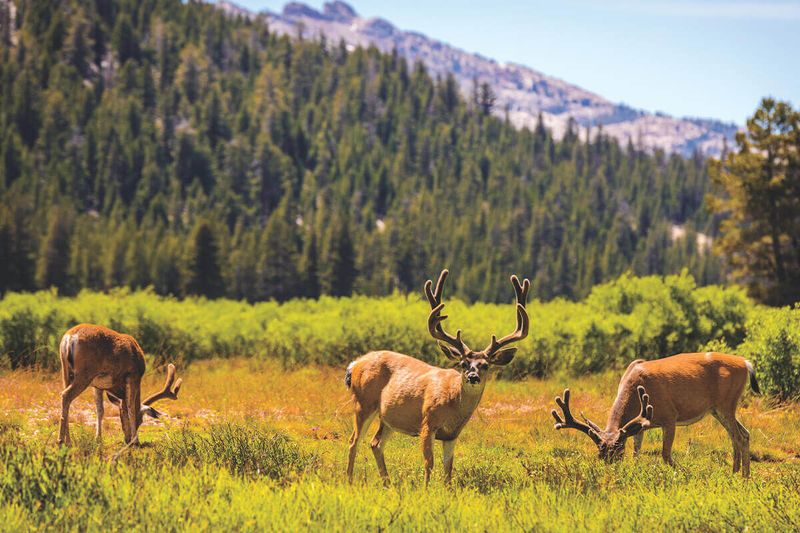
California’s eastern Sierra Nevada range provides ideal mule deer habitat with its varied terrain and vegetation zones. These mountains support significant populations, particularly in protected areas like Yosemite National Park.
The deer here undertake impressive seasonal migrations between summer alpine meadows and lower winter ranges. Conservation challenges include maintaining migration corridors through increasingly developed areas. Early morning visits to meadow edges during summer months offer excellent viewing opportunities.
12. South Dakota’s Black Hills
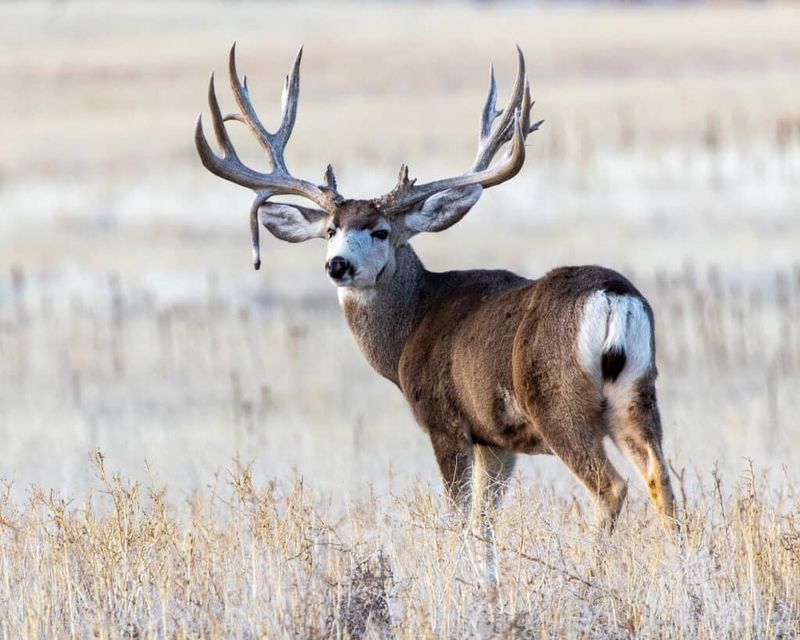
South Dakota’s Black Hills region supports a thriving mule deer population. These forested mountains rising from the plains create diverse habitats perfect for these adaptable animals.
Custer State Park offers reliable viewing opportunities throughout the year. The western prairies also support substantial numbers, particularly in areas with rolling terrain and scattered woodlands. Dawn and dusk provide the best chances to observe natural behaviors as deer move between bedding and feeding areas.
13. Texas Hill Country Opportunities
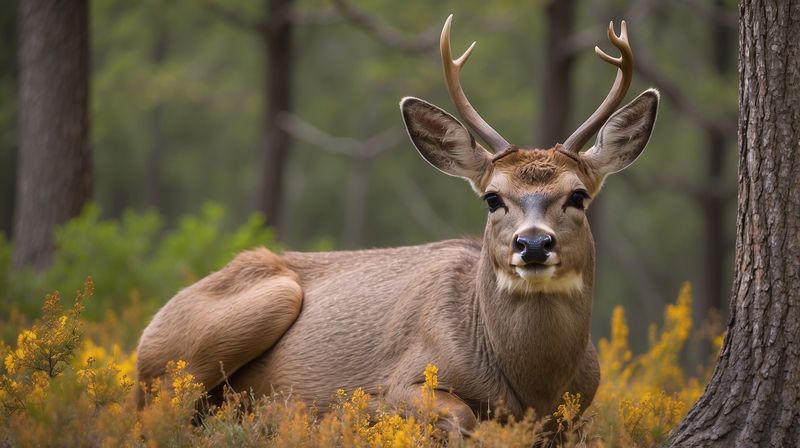
While white-tailed deer dominate much of Texas, the western portions of the state harbor healthy mule deer populations. The Trans-Pecos region and Panhandle offer particularly good habitat with their mix of grasslands and brush country.
Big Bend National Park provides protected viewing areas where these magnificent animals roam freely. Conservation efforts focus on maintaining genetic diversity and habitat quality despite challenges from agricultural development and changing climate conditions that affect vegetation patterns across their range.

